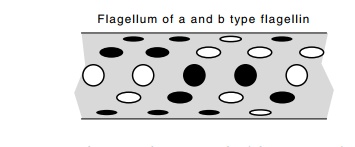Chapter: Genetics and Molecular Biology: Chemotaxis
Genetics of Motility and Chemotaxis
Genetics of Motility and Chemotaxis
Mutants permit dissection of the chemotaxis system,
both by allowing observation of the behavior of cells containing damaged
components of the system and by facilitating biochemical study of the
components. One method for isolation of chemotaxis mutants utilizes swarm
plates. About 100 candidate mutant cells are diluted into a plate containing
low agar concentration, minimal salts, any necessary growth factors, and a
metabolizable attractant such as galactose. As each cell grows into a colony,
it generates an outward-moving ring if the cells are able to consume the
attractant and swim toward higher concentrations. A motile but nonchemotactic
cell makes a moderately large colony with diffuse edges, whereas a nonmotile
cell makes a compact colony with sharp edges.
Galactose-specific chemotactic mutants can be
detected with the swarm plates. One type possessed an altered galactose-binding
protein. The protein had a greater dissociation constant for galactose, as did
the galactose transport system, proving that the same protein is involved with
both galactose chemotaxis and galactose transport.
A different type of genetic selection proved useful
for the isolation of deletions and point mutations in flagellin genes. It is
based on the fact that antibodies against flagella stop their motion and block
motility. Bacterial mutants with different antigenic determinants on their
flagella are resistant to the antibody. Imagine the situation in a merodiploid
cell where an episome possesses genes for the mutant flagellin and the
chromosome codes for the nonmutant flagellin. Such cells will not be
chemotactic in the presence of the antibody because their flagella will be a
mosaic of both types of flagellin and their action will be blocked by the
antibody. Any mutants synthesizing only the flagellin encoded by the episome
will be chemotactic because their flagella will be resistant to the antibody.
That is, the only cells able to swim out of a spot on a swarm plate containing
the antiflagellin antibody are those whose chromosomal flagellin genes are not
functional, but whose episomal

Related Topics